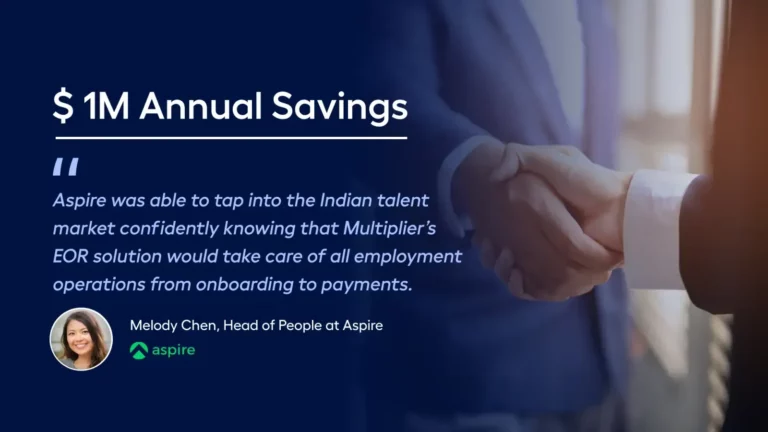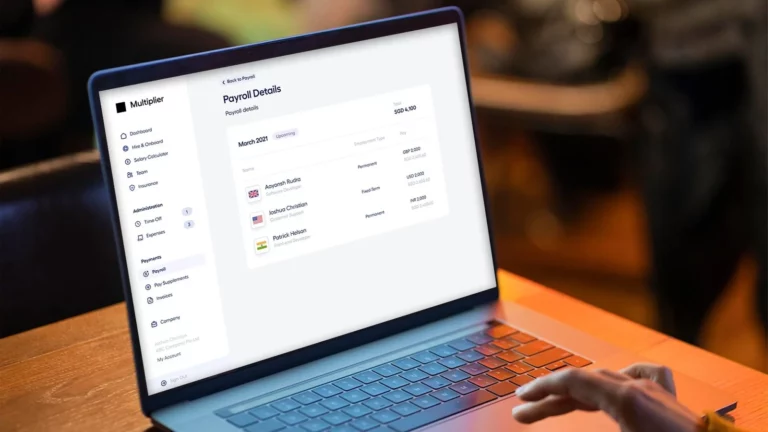Are you a U.S.-based employer hiring U.S. citizens to work remotely for your company?
Well, chances are the employees will be eligible for some income tax exemptions.
All U.S. citizens are bound to pay income tax to the Internal Revenue Service (IRS), irrespective of the geographic location of their employer. In fact, Americans living outside of the U.S will also need to pay income and social security taxes equivalent to those living within the U.S.
All these tax burdens can already feel too much for the employees. Hence, it is always a good idea to be aware of the exemptions they are subject to. That way, they can avoid paying double income tax.
If you fill out and submit Form 673, you can enjoy exemptions from the US withholding tax from your American employer. More on Form 673 and its benefits in this article.
What is Form 673, and Why does it Matter?
Form 673, or IRS Form 673, is for taxpayers seeking an exemption from the U.S. legislation withholding income tax on their wages earned while living in a different country.
Let’s explain with an example.
Suppose an employee is working for a U.S.-based company but residing in Belgium. As per the US tax legislation, they are supposed to pay tax on the money they make from an American employer, even though they don’t live in the U.S.
On filling out Form 673, the employee can claim an exemption from this tax payment and continue earning the same wage without the employer withholding income tax.
Who should Fill Out Form 673?
A US citizen living in a different country, and working for an American employer, is eligible to fill out Form 673. All American employers withhold income tax from U.S. citizens by default. On filling out this Form, the employee can ask their employer to exclude their wages (full or a part of it) from U.S. tax withholding.
Form 673 has a section called “Physical Presence Test”. US citizens who have lived in a different country for more than one year and plan on staying there for another year should check the box adjacent to “Physical Presence Test” within Form 673. This will make the employee eligible to file for exemption as they have lived in a foreign country for more than 330 days in a year.
Once the employee fills the Form 673, they need to submit it to the employers to make all payroll changes effective and to pause withholding income tax deductions. In case the employee decides to return to the US, they can Form W-4 to resume income tax withholding.
How to Fill Out Form 673? A Step-by-step Guide
Let’s discuss how employees can fill out Form 673. We have segregated Form 673 into three different sections to simplify the process:
Introductory
Like any other IRS form, you must provide your full name and Social Security Number (SSN) in this section.
Section 1
In this section, an employee must provide sufficient proof to establish that they are staying in a foreign country and eligible for a tax exemption. To prove their eligibility, an employee can qualify in any of the two tests mentioned below:
- Bona fide residence test: Under this test, employees must prove that they have lived in a foreign country for a minimum of 365 days or a full calendar year.
- Physical presence test: To qualify for the physical presence test, an employee must stay at least 330 days in a foreign land within a full calendar year.
An employee qualifying for any of these tests can easily benefit from tax exemptions.
Section 2
In this section, an employee must provide the required inputs for overseas housing exclusion. The essential details required in this section are as follows:
- The yearly rent amount of the employee should be provided
- The details related to water, gas, electricity, and other utilities should be included
- The employees need to provide all details of their property insurance
- Employees may need to pay a certain fee to secure a lease. This fee is non-refundable
- Any expenses related to household maintenance should be included in this section for exemptions
- If the employee is paying any occupancy tax, it should be added to this section
- The employee needs to add up all the housing-related costs and deduct them from the base amount of the housing
Section 3
In this section, an employee must provide all the certifications to base their claims in section 2 formally. These certificates should prove that the estimated housing cost and any other amount reported in other statements do not exceed the total housing cost amount.
How to Submit the Form 673 to the Employer?
Once an employee completes the form, they need to submit it to the employer. The employer must receive a completed Form 673 to proceed with the next activities. The next step for the employer will be to pause withholding US income taxes on the employee’s income.
Alternatively, if the employer identifies that the employee is not eligible to enjoy these exemptions, they can disregard Form 673 and continue withholding income taxes. Hence, before submitting Form 673, employees should ensure that they have filled up the form correctly and have provided all required certifications to establish their claims.
Are there any penalties for not filling out Form 673?
Not filling the Form 673 is not equivalent to breaking the law. However, if an American citizen living abroad or working for a US company doesn’t file Form 673, they would not qualify for the exemptions. This can mean that an employee will need to pay double taxes.
What will happen if Form 673 is incorrectly filled-out?
If Form 673 is incomplete or incorrectly filled, it would mean that the employer will continue to withhold US income tax on some parts of the employee’s wage. On the contrary, there may be instances where the employer feels the employee is not eligible for the exemptions. In those scenarios, the employee needs professional expertise and should get in touch with a CPA who can investigate the issue in detail.
However, sometimes it is the case that the employee files a Form 673 and they are completely non-eligible for the tax benefits. For example, an employee didn’t stay overseas for over 330 days. In that case, they don’t qualify for the exemption. Once it is established that the employee is ineligible, they must pay all income taxes by the end of that financial year.
Let Multiplier Help You Out!
Running a global payroll has its fair share of risks and challenges.
It is not easy to make payments to remote employees, freelancers, and independent contractors, without violating the compliances.
Every international business should build a strong system where overseas employees enjoy all the required tax benefits and exemptions.
A Business-to-Business SaaS onboarding platform that can take care of all the tax compliances (including timely form fill-outs) is – Multiplier.
The multiplier can help businesses to:
- Simplify multi-currency payrolls to manage a global workforce efficiently
- Pay effortlessly to freelancers, contractors, and remote employees
- Keep track of all compliance requirements in one place
Want to explore how Multiplier can assist you?
Book a demo to know further!







